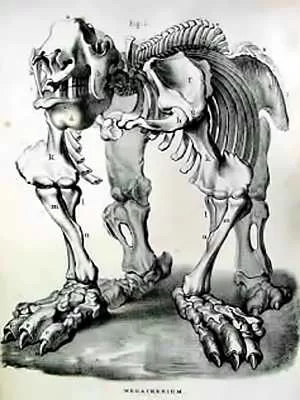When we think of the pioneers of paleontology, names like Gideon Mantell and Charles Darwin often come to mind. However, one figure stands out not just for his contributions to the field but also for his eccentric lifestyle: The Very Reverend Dr. William Buckland. His life was a fascinating blend of scientific discovery, culinary experimentation, and a touch of the bizarre.
Discovery of Iguanodon
In 1822, Gideon Mantell stumbled upon the teeth of what would later be identified as the Iguanodon. However, his findings were met with skepticism from the scientific community, including the renowned anatomist Georges Cuvier. One of the most vocal critics was William Buckland, who suggested that the teeth might belong to a wolf-fish or even a mammal that had perished in Noah’s flood. Despite Buckland’s cautionary advice, Mantell eventually published his findings, paving the way for the recognition of dinosaurs.

Interestingly, Buckland himself would later make history by becoming the first person to describe a dinosaur in print. He published his findings on the Megalosaurus, a carnivorous dinosaur, based on a fossilized femur discovered in a quarry in Cornwall. This marked a significant milestone in paleontology, as it was one of the first formal descriptions of a dinosaur.
A Life of Eccentricity
Buckland was not just a paleontologist; he was a character in his own right. Known for his explicit lectures on the mating habits of reptiles, he often faced criticism for his enthusiasm. The Times even suggested he should temper his discussions in the presence of women, while Charles Darwin dismissed him as a “buffoon.” Yet, his passion for science was undeniable.
His home in Oxford was a veritable museum of curiosities, lined with animal skulls, including those of monkeys, bears, and hyenas. His wife, Mary, was equally enthusiastic about nature and often collaborated with him on scientific experiments. One memorable night, they conducted a study to prove that the gait of the Cheirotherium, an ancient reptile, resembled that of a tortoise.
The Culinary Adventurer
Perhaps the most astonishing aspect of Buckland’s life was his diet. He was a committed zoophagist, believing that all animals were created for human consumption. His culinary adventures included dishes like elephant trunk soup, panther chops, and even grilled giraffe, which he sampled after a fire at the London Zoo. Buckland’s palate was adventurous, but he found the taste of mole to be the worst—until he tried bluebottles.
His eccentricity extended to his interactions with the world around him. During a church tour, he famously lapped up what he thought was “martyr’s blood,” only to discover it was bat urine. On another occasion, he consumed what was believed to be the heart of King Louis XIV, declaring, “I have eaten many strange things, but have never eaten the heart of a king before.”
The Legacy of the Bucklands
Buckland’s son, Francis Buckland, continued his father’s legacy of culinary experimentation and became a notable naturalist in his own right. He was known for his innovative approaches to fish farming and even founded the Acclimatization Society, which aimed to find new food sources.
William Buckland’s contributions to paleontology were significant. He discovered the Red Lady of Paviland, the oldest human skeleton in Britain, in 1823. This remarkable find occurred in the Goat’s Hole Cave on the Gower Peninsula, where Buckland unearthed bones dating back approximately 33,000 years. Initially, he believed the skeleton belonged to a female prostitute from the Roman period, but further examination revealed it was a young male. This discovery marked the oldest ceremonial burial in Europe, confirmed by radiocarbon dating.
A Final Resting Place
Buckland’s life was filled with humor, even in death. After he passed away in 1856, it was discovered that the plot he had chosen for his burial was solid Jurassic limestone. To create his grave, workers had to blast the rock with gunpowder—a fittingly dramatic end for a man of his geological expertise.
A student of Buckland’s once penned a humorous verse about his burial, suggesting that if he were laid to rest in “common alluvial soil,” he would rise again to reclaim his geological tools.
Conclusion
William Buckland was a man of many contradictions: a serious scientist with a penchant for the bizarre, a paleontologist who dined on exotic meats, and a pioneer who made significant contributions to our understanding of prehistoric life. His legacy lives on, not just in the fossils he unearthed but also in the colorful stories that continue to captivate our imaginations.
In a world where science often feels rigid and serious, Buckland reminds us that curiosity, humor, and a taste for adventure can lead to remarkable discoveries. So, the next time you bite into a piece of meat, consider the eccentric life of William Buckland, the man who believed that the world’s creatures were meant to be savored.